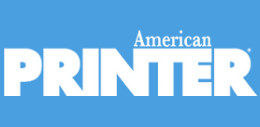
Ask any consultant, academic or equipment vendor about digital opportunities, and they'll give you a knowing look and say, “Color picture books are hot!”
You'll probably nod in agreement, and then call me to ask, “Johnson, what, in your world, are color picture books?”
Forget shoeboxes full of photos or disks filled with digital images. Frank Romano of the Rochester Institute of Technology predicts the photo book market (for lack of a better name) will grow to surpass a billion dollars by 2010.
Consider a few facts about what can be called the amateur photography market. This includes Joey's first birthday, where the photographer, the subject and the image quality all fit well under the amateur label. The amateur moniker also applies to the wedding and yearbook business, where the photographer is professional but the subjects are not.
At the top end is the doctor by day whose picture-taking hobby has become so serious that he now hires professional models for his art photo sessions. Though he is an amateur, his quality of work is anything but.
In all of these scenarios, the resulting photos are not for resale, but are created strictly for the pleasure of the interested parties. (The wedding photographer sells prints, but his market is limited to his subjects.) If amateurs want to see their photos in print, they will have to take responsibility themselves.
For a century, pictures have been printed by exposing photosensitized paper to light projected through film. Those days are gone. Professional photographers at the very high end still use film, as do some high school classes. These people aren't our market.
The color picture book market encompasses every picture taken for pleasure or posterity. All of these prints that were once printed by color photo labs, camera shops and the corner drug store now have the potential to be printed digitally — using laser, inkjet or even offset technology.
Digital has leveled the playing field; photo labs no longer have the compelling edge that projecting light onto sensitized paper once gave them.
Here's an example to demonstrate what color picture books are in the minds of our potential customers, and what they expect from their vendors.
I have four kids. Each has a birthday party every year, attended by four grandparents, fourteen aunts and uncles, fourteen cousins, and some great aunts and uncles.
That's about 44 people, many taking pictures. Adults use digital cameras; teens use camera phones. We might wind up with 200 good photos, all told.
In the old days, each shutterbug would have taken film somewhere to be developed. A few dedicated souls would dutifully paste them onto elaborate scrapbook pages. Many would toss them into a drawer, to sort “later.”
Now, everyone uploads their pictures to their home computer as soon as they leave the party. Some email me sample photos that night. Within a day, party pictures are posted on personal Web sites and on public photo sites that allow members to display and share pictures for free.
People still want their pictures printed, to show Aunt Sara (who refuses to own a computer), to pass around the office and to look at while sitting on the couch. We could order digital prints of each picture. Or, we could order a color picture book.
We impose the 200 good party photos, two per page, onto preformatted templates that we choose online. Now we have a 100-page book filled with photos of adorable children or grandchildren from 10 different households — a nice little digital printing order: “Do a good job for me, and I'll order more books: four times each year, plus Christmas, Thanksgiving and Independence Day. My siblings will do the same for each of their 14 kids. We are used to paying for photo processing, so do a good job, make life easy, make my children look good, and I'll fork out a pretty penny for a priceless keepsake.”
Not ready to buy an iGen? The single mother with an only child and no extended family also wants the best for her angel. She'll have fewer pictures, so lighter duty equipment and a format with fewer pages would serve her well.
Or, target the family with 12 grown brothers and sisters who have an average of five kids each. Earn their business and print their picture books on an offset press.
There are many possibilities, and the color picture book market still is being defined. What opportunities can you think of?
Want to learn more? At Graph Expo in Chicago, I will conduct an in-depth seminar,“Picture Perfect Profits — Color Picture Books are Hot,” September 12 at 8:15 a.m.